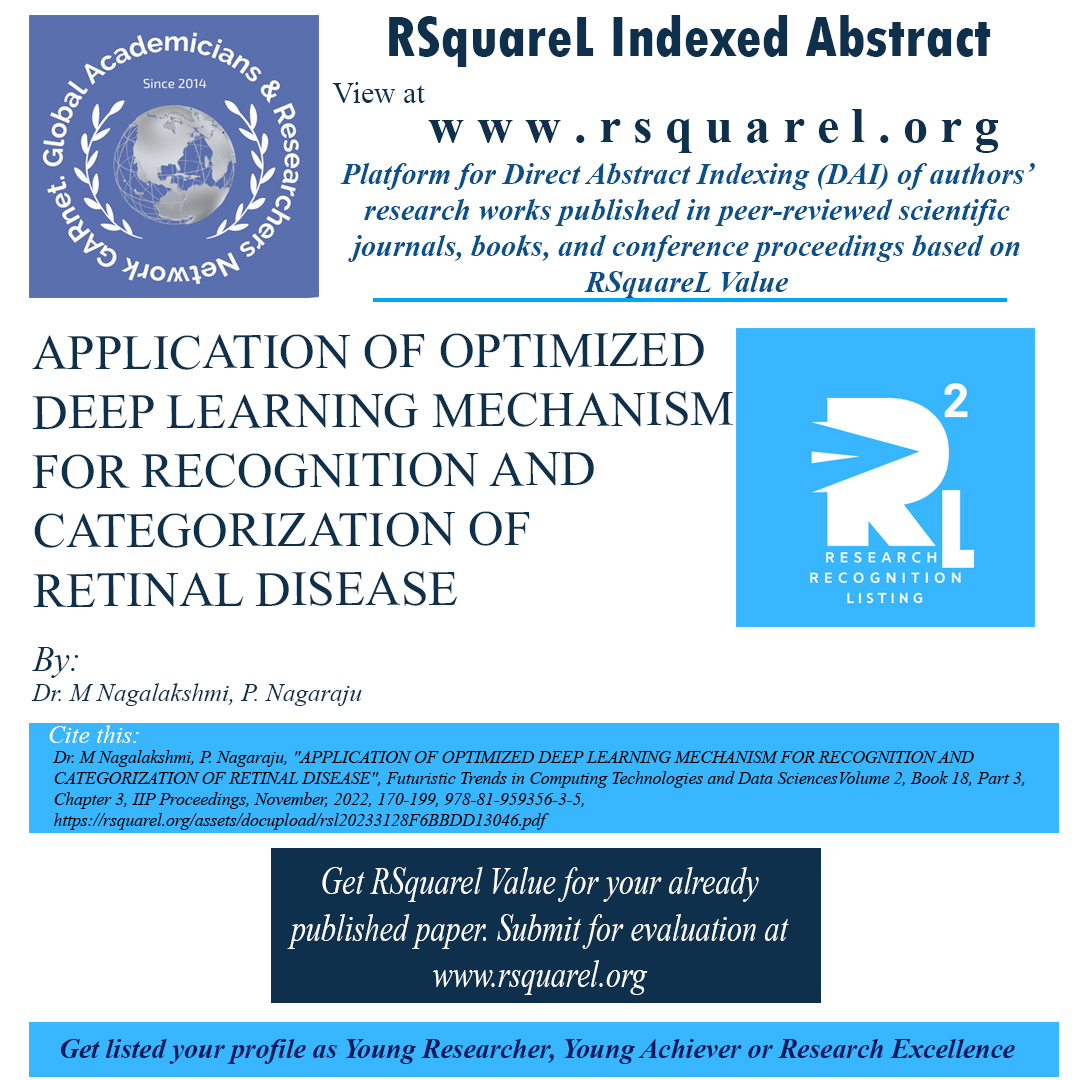editedbook
Publication: IIP Proceedings Year: 2022, Month: November Page No: 170-199, ISSN/ISBN: 978-81-959356-3-5, DOI/Link: https://rsquarel.org/assets/docupload/rsl20233128F6BBDD13046.pdf
APPLICATION OF OPTIMIZED DEEP LEARNING MECHANISM FOR RECOGNITION AND CATEGORIZATION OF RETINAL DISEASE
Area/Stream: Computing Technologies and Data Sciences, Authors: Dr. M Nagalakshmi, P. Nagaraju Keywords: Retinal disease; Deep learning; African Buffalo optimization; Classification, Book Name /series: Futuristic Trends in Computing Technologies and Data SciencesVolume 2, Book 18, Part 3, Chapter 3Publication: IIP Proceedings Year: 2022, Month: November Page No: 170-199, ISSN/ISBN: 978-81-959356-3-5, DOI/Link: https://rsquarel.org/assets/docupload/rsl20233128F6BBDD13046.pdf
Abstract:
Retinal disorders are one of the common eye problems and its complication affects the eyes. In some cases, the retinal diseases would not cause any symptoms or it only shows mild vision impairments. Finally, it causes no vision or blindness. So, earlier recognition of symptoms could help to avoid blindness. Routine screening is one of the methods for early diagnosis of retinal disease. Other common ways to identify retinal disease is to have an expert evaluate and rate eye photographs for the existence and severity of the illness. Unfortunately, in many parts of the world where retinal disease is common, but the medical specialists capable of recognizing DR are scarce. Hence, a novel optimized African Buffalo based deep Convolutional Neural Network (AB-DCNN) deep learning model is introduced in this article, which could detect the retinal disorders in the earlier stage from the fundus retinal image datasets and classify its stages. The proposed mechanism could detect diseases like Central Serous Retinopathy (CSR), Age-related Macular Degeneration (AMD), Diabetic Retinopathy (DR) and Macular hole (MH) and classify its stages as Severe, Moderate, Mild NPDR, PDR, and normal case. Depending upon the clinical importance, the impact of uncertainty on system performance and the relation among explainability and uncertainty are examined. The uncertainty evidences make the system more reliable for usage in clinical environments. The proposed methodology increases the operational speed and lessens the computation time of the algorithm. It also reduces the losses and enhances the classification accuracy.
Cite this: Dr. M Nagalakshmi, P. Nagaraju,"APPLICATION OF OPTIMIZED DEEP LEARNING MECHANISM FOR RECOGNITION AND CATEGORIZATION OF RETINAL DISEASE", Futuristic Trends in Computing Technologies and Data SciencesVolume 2, Book 18, Part 3, Chapter 3, November, 2022, 170-199, 978-81-959356-3-5, https://rsquarel.org/assets/docupload/rsl20233128F6BBDD13046.pdf
Views: 4176
Download File
News
